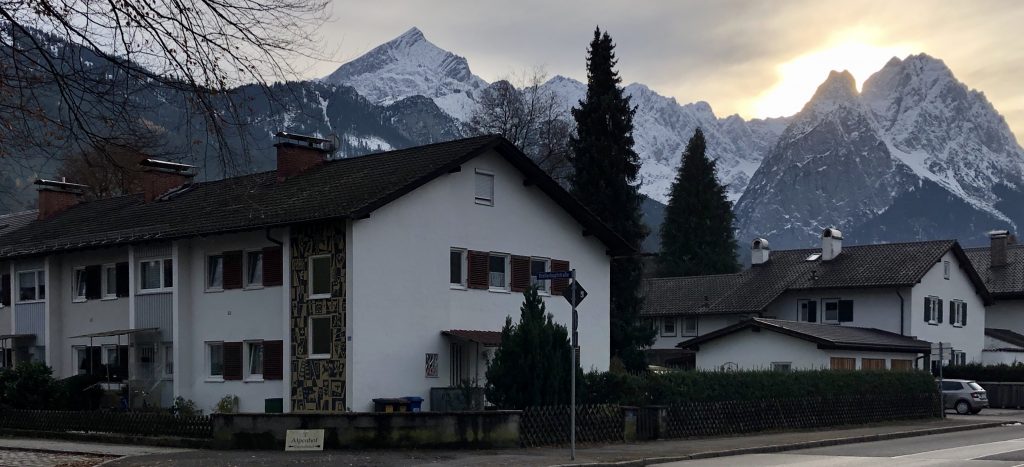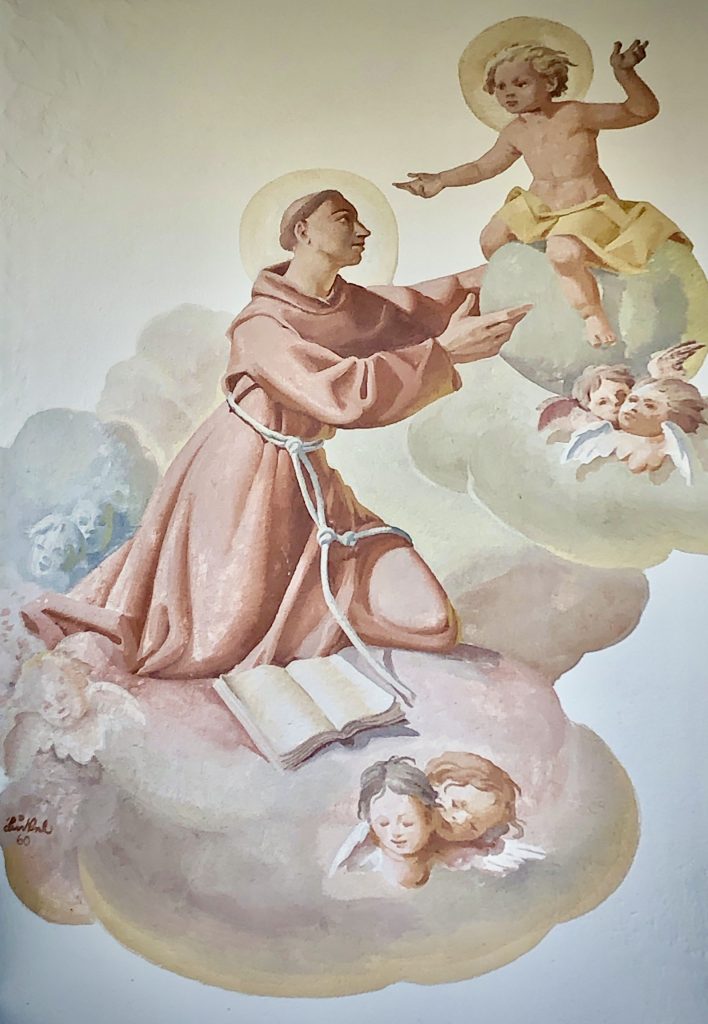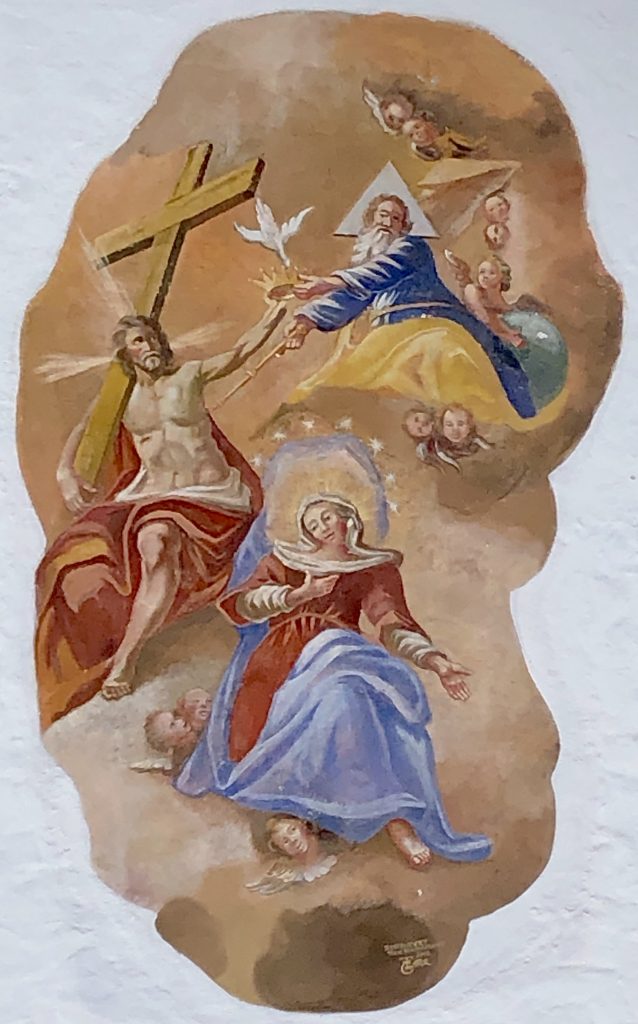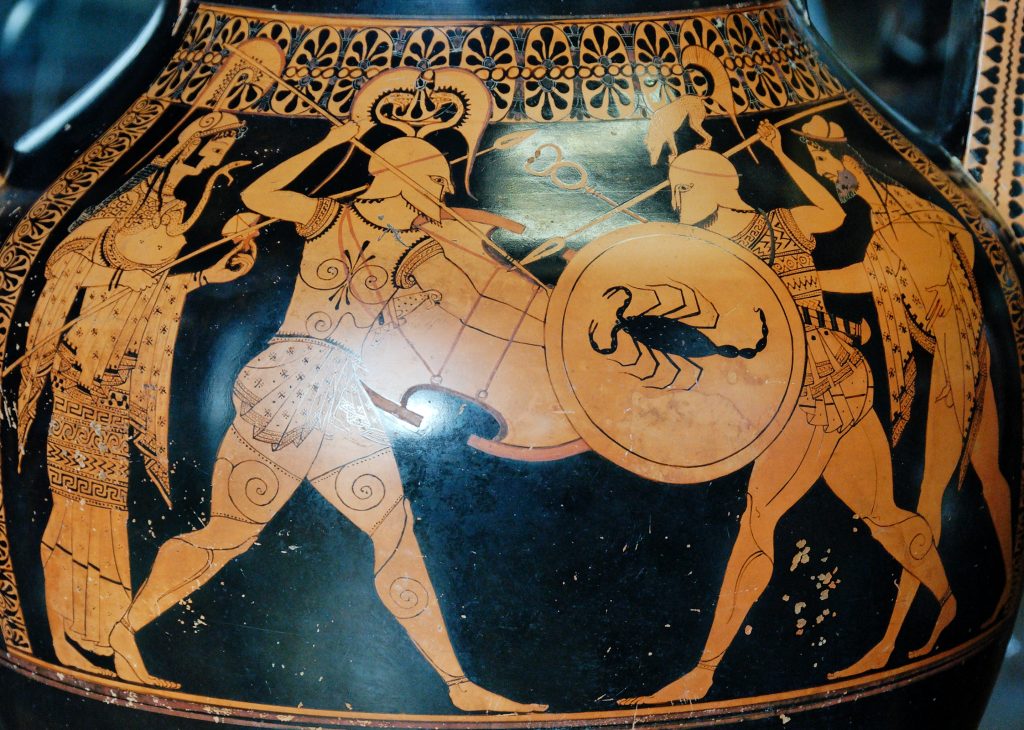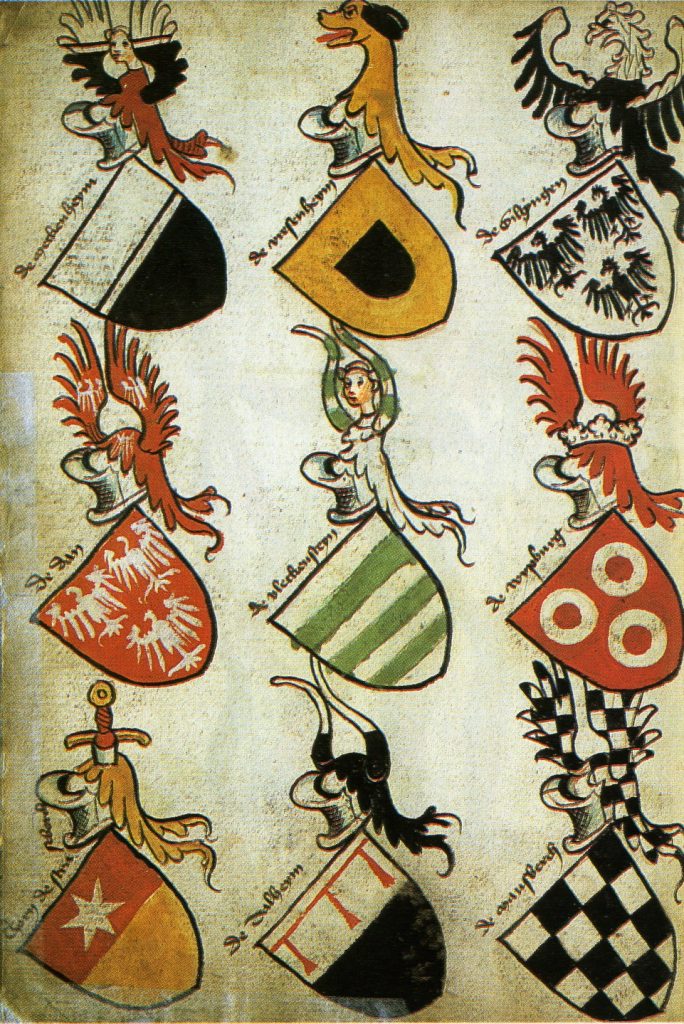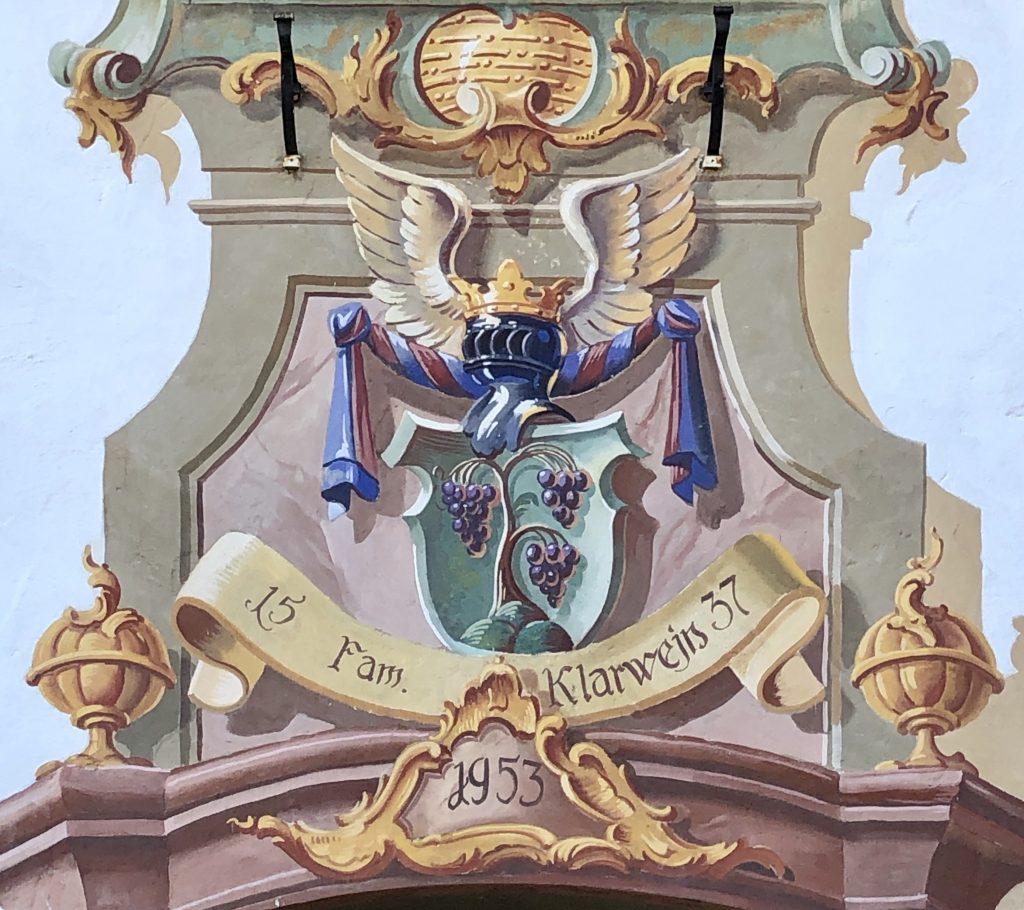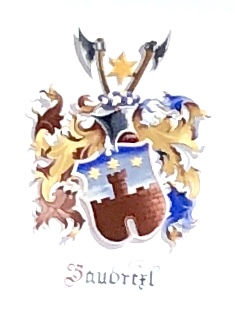- Weichslgartner, Alois J. Lüftlmalerei. Pannonia-Verlag, 2nd ed., 1981, p. 8: "Etwas an die Seite gerückt, aber nicht weniger dekorativ, ist an die Fassade des ehemaligen Gasthauses Zum Hirschen in Berchtesgaden auch eine Sonnenuhr gemalt. Sie kann sich dort gegenüber den so lebendigen Szenen mit den als Menschen verkleideten Affen nicht recht durchsetzen. In vielen anderen Fällen aber bildet eine Sonnenuhr den Mittelpunkt von Fassadenmalereien. Oft ist sie, samt ornamentaler oder figürlicher Umrahmung, sogar der einzige Wandschmuck. An ihrem Beispiel zeigt sich sehr sinnfällig, wie aus einem »Gebrauchsgegenstand« im Laufe der Zeit ein Schmuckelement geworden ist. Bevor im Mittelalter die ersten Turmuhren konstruiert und installiert worden sind, war man beim Zeitmessung auf die Sonnenuhr angewiesen, soweit man sich nicht mit Sanduhren oder ähnlichen Instrumenten behalf. Solche Sonnenuhren waren an vielen Kirchen und öffentlichen Gebäuden, aber auch an Bürgerhäusern zu finden, und zwar auch dann noch -- sogar bis in die Gegenwart herein -, als man sie eigentlich gar nicht mehr nötig hatte. Meistens wurde die Sonnenuhr liebevoll mit Bildern und Ornamentenausstaffiert oder in solche Fassadenmalereien »hineinkomponiert«. Die Fassadenmaler fanden hier ein besonders dankbares Betätigungsfeld, den da konnten sie ihrer Phantasie freien Lauf lassen. Solche Sonnenuhren waren gleichzeitig Orientierungshilfe und Wandschmuck. Eine der originellsten und kunstvollsten dieser Sonnenuhren auf bayerischen Boden finden wir an der 1625 erbauten Stadtpfarrkirche St. Jakob in Dachau. Dort malte im Jahre 1699 Johann Georg Hörmann mit barockem Schwung unter die im geschweiften Rechteck angebrachten Stundenziffern der Sonnenuhr in geradezu tüftlerischer Darstellung auch noch die Symbole der zwölf Sternzeichen beziehungsweise Monatszeichen - von Januar bis Dezember - in einer Achterschleife so plaziert, daß der Schatten des »Sonnenzeigers« jeweils nicht nur auf die Ziffer der Tagesstunde, sondern jeden Tag um 12 Uhr mittags auch noch auf das »zuständige« Monatszeichen fällt. Der Mechanismus ist so angeordnet, daß der über die Sonnenuhr gemalte Gott Chronos, also der symbolische Herr über die Zeit, das dazu notwendige Eisenstab-system in der Hand zu haben und so zu dirigieren scheint."
Lüftlmalerei
A street by street guide to the fresco and facade paintings in the Garmisch-Partenkirchen district

